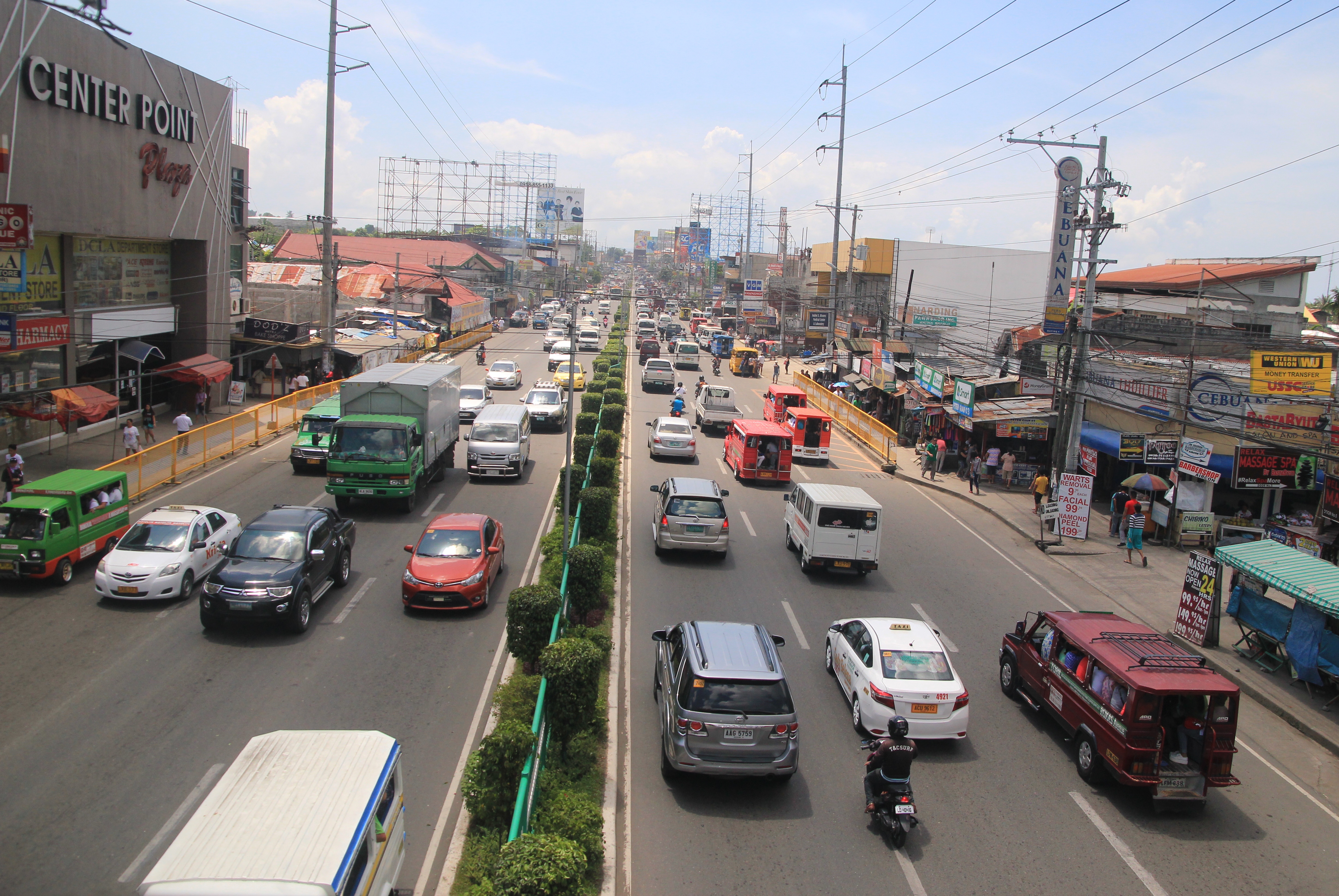DAVAO CITY (MindaNews / 2 Sep) – Transportation Secretary Arthur Tugade has fast-tracked the implementation of the highly anticipated high priority bus system (HPBS), a mass public transport modernization program that seeks to decongest traffic in Davao City, according to Mayor Sara Duterte.
 Traffic in downtown Davao City during off-peak hours. MindaNews file photo by GG BUENO
Traffic in downtown Davao City during off-peak hours. MindaNews file photo by GG BUENO
During her live interview over Davao City Disaster Radio (DCDR 87.5), Duterte said the Department of Transportation (DOTr) has moved the partial implementation of the P18.6-billion project to an earlier date, from the initial schedule of February 2022 to November 2021.
Even as the HPBS has yet to be implemented next year, Duterte said that the local government would pursue an interim HPBS, which is expected to start anytime.
“The partial operation – which is the real HPBS – has been moved by Secretary Tugade from February 2022 to November 2021. But our interim HPBS, we are doing our best to start anytime. Our interim HPBS is coming soon,” she said.
The mayor said the local government has yet to distribute the social packages to the drivers who would be displaced, many of whom would be transferred, for the meantime, to a different route when the interim phase of the bus system gets started.
“We are not yet ready to move our jeepneys to other routes. Our plan right now with the interim, is to transfer them to a different route. Once they are transferred to a different route, they will be given cash assistance,” she added.
Duterte said that the local government plans to enroll affected drivers in government programs, including a college scholarship for single drivers, Tulong Panghanapbuhay para sa mga Displaced/Disadvantaged Workers (Tupad), and training on bus driving and repair at the Technical Education and Skills Development Authority (TESDA).
In hiring drivers and mechanics for HPBS, Duterte said that bus companies serving any of the routes would prioritize the displaced drivers.
Norman Baloro, commissioner of the Presidential Commission for the Urban Poor, said the government has allocated at least P900 million for 19,249 jeepney operators and drivers to be affected by HPBS.
According to him, the social development program will include, among others, scholarship for the children of affected drivers and operators, livelihood assistance, certificate course on bus driving for displaced operators and drivers who want to apply as HPBS drivers, and livelihood training for the family members with TESDA.
The HPBS will need around 3,000 bus drivers, he said.
In a press release dated December 5, 2019, the DOTr announced that the bus system is scheduled for implementation from 2020 to 2023, and aims to “provide an efficient and affordable mode of transport for Dabawenyos through the delivery” of a modern HPBS.
It added that the interconnected bus services would be prioritized along the 137-kilometer core network, and 489 km of feeder routes.
The proposed project has three components, namely, public transport system improvement, institutional capacity strengthening, and social development program.
The DOTr said that the HPBS or the project’s public transport system improvement component will involve the provision of hierarchical, interconnected bus services along major arterial roads, as well as an extensive network of feeder services covering the entire urban area.
Once operational, the HPBS will have 29 bus routes divided into the following four tiers: MetroDavao (will form the core services that connect all major commercial centers along five routes), DavaoInter (will run along with eight routes connecting the inner urban areas directly to the Davao Central Business District), DavaoFeeder (will run along nine routes linking smaller centers and areas of more dispersed populations to the MetroDavao services), and DavaoLocal (will provide a link between the outer rural areas of the city and main transport system or the integrated terminals). (Antonio L. Colina IV / MindaNews)